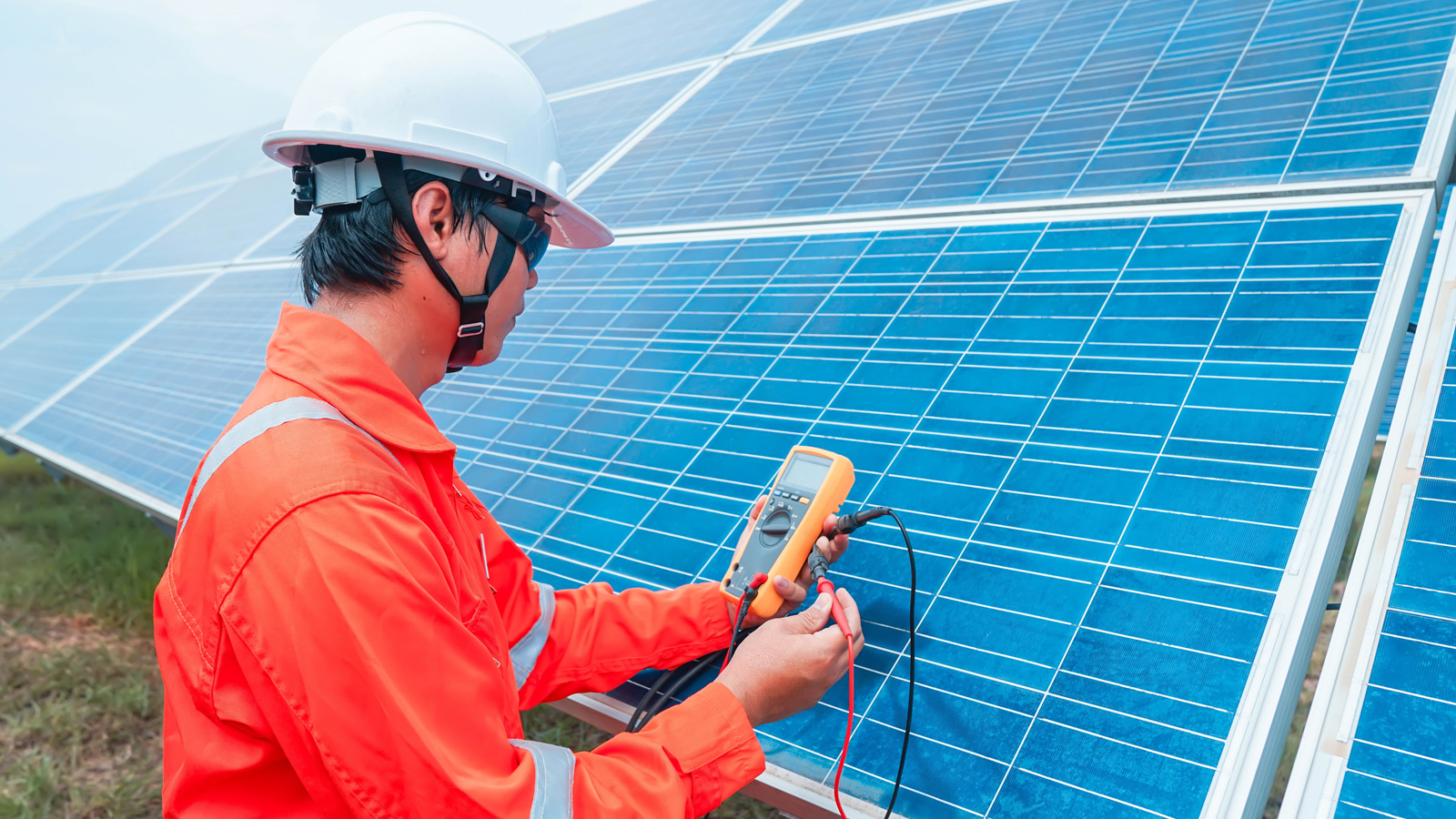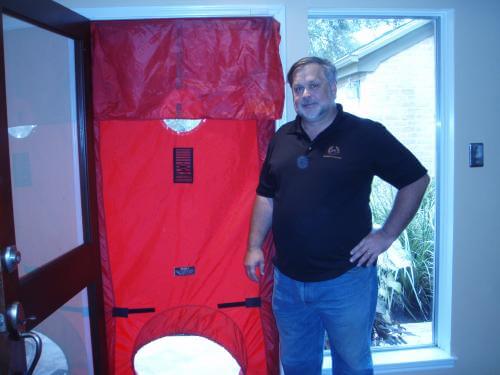The Role of Power Testing in Attaining an Airtight Option for Your Property
Power testing is necessary for residential or commercial property proprietors seeking to create a closed setting. It identifies air leakages and inefficiencies that can endanger power performance. Typical culprits include gaps around home windows and doors. Utilizing methods like blower door tests and thermal imaging, property owners can obtain insights right into their residential property's vulnerabilities (air tight solutions). Comprehending these searchings for is important. What actions should be taken when air leakages are identified? The responses hold the trick to enhanced convenience and savings
Comprehending Power Screening and Its Value
Energy testing plays a necessary duty in assessing the airtightness of structures and buildings. By determining air leak, this technique supplies critical insights into a residential property's power performance, thermal comfort, and overall performance. Airtight structures lower power intake, guaranteeing that home heating and cooling systems operate efficiently. This testing process commonly involves techniques such as blower door tests, which develop a regulated atmosphere to recognize unintentional air pathways.Understanding the value of power screening prolongs past conformity with building regulations; it fosters a proactive technique to sustainability. Recognizing air leakages early can bring about prompt remediation, eventually improving indoor air quality and decreasing energy costs. Additionally, power screening adds to the durability of structure materials by reducing moisture buildup and relevant damages. As recognition of ecological effect boosts, power screening ends up being an indispensable device for building contractors and house owners aiming for high-performance residential or commercial properties.
Typical Sources of Air Leaks in Feature
Recognizing common sources of air leaks is essential for enhancing a home's power performance. These leakages typically occur in numerous locations of a building, significantly influencing heating and cooling expenses. Usual wrongdoers consist of gaps around doors and windows, where seals may weaken in time. In addition, electric outlets and buttons can develop paths for air exchange if not appropriately insulated. Attics and cellars are likewise constant sources, specifically where walls fulfill the roofing system or the foundation. Other prospective leakage points include pipes penetrations, venting systems, and the locations bordering chimneys. Older residential properties may experience from broken down structure products, increasing susceptability to air seepage. By identifying these usual resources, home proprietors can take proactive steps to seal leaks, therefore enhancing overall energy efficiency and convenience within their spaces. Attending to these problems is an important part of establishing an airtight service for any kind of building.
Methods of Energy Testing: Blower Door and Thermal Imaging
Effective energy testing techniques, such as blower door examinations and thermal imaging, play a crucial duty in detecting air leaks within a residential property. The blower door examination involves depressurizing a building or pressurizing to measure airflow and identify leaks. An adjusted follower is set up in an outside entrance, and the resulting pressure distinction highlights locations of unwanted air infiltration. This method evaluates the total airtightness of the structure.Thermal imaging matches blower door examinations by aesthetically identifying temperature level variations on surfaces, revealing covert air leaks. Infrared cameras record warm loss or gain, permitting precise recognition of issue locations, such as poorly insulated wall surfaces or spaces around doors and windows. energy testing south carolina. Together, these techniques provide an extensive assessment of a residential or commercial property's energy efficiency, making it possible for home owners to attend to air leakages successfully and boost general efficiency
Advantages of Identifying Air Leaks
Determining air leakages provides substantial advantages for energy efficiency and interior convenience. By sealing these leakages, buildings can reduce power usage, leading to lower energy expenses and a decreased carbon footprint. In addition, enhanced airtightness adds to an extra steady interior setting, improving general convenience for occupants.
Energy Effectiveness Improvements
Finding air leaks is important for improving energy efficiency in structures. Recognizing these leaks allows property owners to resolve areas where conditioned air runs away or unconditioned air goes into, leading to substantial power savings. By securing fractures and voids, buildings can keep a consistent temperature level, lowering the demand on heating and cooling down systems. This not just lowers power bills but likewise decreases the environmental effect connected with enhanced power consumption. Furthermore, power performance improvements add to a building's general sustainability, making it a much more eye-catching option for eco-conscious buyers or lessees. Eventually, focusing on air leakage discovery and removal helps optimize energy usage, promotes liable resource monitoring, and supports long-lasting monetary advantages for homeowner.

Improved Indoor Convenience
Addressing air leakages not only leads to power savings however additionally significantly improves indoor comfort. When air leakages are properly identified and sealed, temperature policy within a property becomes more effective. This leads to consistent interior temperatures, getting rid of cool drafts in winter and hot internet places in summer season. Boosted insulation additionally reduces sound pollution from outside, developing a quieter and more tranquil living setting. Furthermore, boosted air high quality is accomplished by decreasing the infiltration of outside contaminants, irritants, and humidity, adding to the general well-being of residents. As a result, homeowners experience a more enjoyable environment, fostering leisure and efficiency. Inevitably, fixing and recognizing air leakages is essential for achieving suitable interior convenience throughout the year.
How Power Screening Enhances Convenience and Indoor Air High Quality
Energy screening plays a necessary role in boosting temperature level regulation within indoor areas, making certain a comfy and regular environment. By securing and recognizing air leakages, it likewise considerably decreases the seepage of contaminants, thus improving interior air quality. This double effect promotes total wellness for owners.
Improved Temperature Law
Reliable temperature level regulation greatly contributes to both comfort and interior air top quality, making it a vital focus for modern-day structure style. Energy screening plays a vital function in accomplishing this law by determining areas where warm loss or gain takes place, enabling targeted improvements. By making certain a closed building envelope, energy testing aids maintain regular interior temperatures, minimizing the requirement for extreme heating or air conditioning. This security boosts resident comfort, as fluctuations in temperature can lead to discomfort and dissatisfaction. Additionally, effective temperature level control can boost indoor air top quality by lowering the danger of condensation and mold growth, which thrive in irregular temperature conditions. Power screening is important for optimizing temperature monitoring in commercial and residential residential or commercial properties.
Reduced Toxin Infiltration
While lots of aspects add to indoor air quality, lowered pollutant infiltration stands apart as a necessary aspect that power testing can significantly improve. Energy testing determines air leaks and weak factors in a structure's envelope, which may enable outdoor toxins, allergens, and dampness to get in interior spaces. By sealing these leakages, properties can efficiently limit air-borne impurities, resulting in a healthier setting. Improved airtightness not just improves convenience but additionally reduces the concern on home heating and cooling systems, leading to energy savings. In addition, decreased toxin infiltration cultivates far better total well-being for passengers, as cleaner air advertises breathing health and decreases allergic reaction signs and symptoms. Consequently, power testing plays an essential role in creating both an energy-efficient and health-conscious living room.
The Financial Impact of Energy Testing on Utility Bills

Steps to Take After Energy Testing Outcomes
As soon as power screening outcomes remain in, property owners need to thoroughly assess the findings to figure out one of the most reliable path ahead. The very first action involves determining the areas that require renovation, such as air leaks or insulation shortages. Homeowners ought to then focus on fixings based upon the extent of the concerns and their possible influence on power efficiency.Next, it is suggested to speak with experts who specialize in power effectiveness to create a thorough activity strategy. This may consist of options like sealing gaps, including insulation, or upgrading windows and doors.After executing the necessary adjustments, a follow-up power test can establish the performance of the repair services. Constant monitoring is likewise important to ensure that the home maintains its impermeable condition with time. By adhering to these actions, house owners can significantly boost their residential property's power efficiency, causing decreased energy expenses and improved convenience.
Frequently Asked Inquiries
Exactly how Often Should I Conduct Energy Evaluating on My Property?
The frequency of power testing need to typically be every couple of years, or following substantial renovations. Routine assessments assist determine performance improvements and ensure that the residential or commercial property preserves suitable power performance in time, adjusting to changing problems.
Is Energy Screening Necessary for New Constructions?
Power testing is necessary for brand-new buildings, as it recognizes potential air leakage and insulation problems - air tight solutions. Carrying out these tests guarantees energy effectiveness, boosts interior convenience, and meets building regulations, eventually causing lasting cost financial savings
Can I Carry Out Power Testing Myself?
Power screening typically calls for specialized equipment and competence. While some house owners may attempt fundamental evaluations, specialist services ensure accurate results and reliable identification of issues, ultimately resulting in much better energy efficiency and comfort in living rooms.
What Is the Price of Specialist Energy Screening Services?
The price of professional energy testing services generally varies from $300 to $1,500, depending upon residential or commercial property location, intricacy, and dimension. House owners must think about possible power savings when assessing the investment in these services.
How Much Time Do Power Testing Results Commonly Last?
Power screening results typically stay valid for one to 3 years, depending upon elements like structure alterations and environmental changes. Routine updates are suggested to guarantee accuracy and preserve reliable power performance requirements. Effective energy testing methods, such as blower door examinations and thermal imaging, play an essential function in identifying air leakages within a home. Identifying these leaks allows building proprietors to attend to areas where conditioned air runs away or unconditioned air enters, leading to significant energy cost savings. Power testing determines air leakages and weak points in a building's envelope, which may enable outside pollutants, irritants, and moisture to enter interior spaces. As homeowners increasingly seek to minimize their energy expenditures, the role of energy testing ends up being crucial in determining leakages and inadequacies. Property owners ought to after that prioritize fixings based on the seriousness of the problems and their prospective effect on energy efficiency.Next, it is suggested to seek advice from with specialists that specialize in power effectiveness to create a thorough action strategy.
Comments on “From cold rooms to high bills—how energy testing taylors sc solves common comfort complaints”